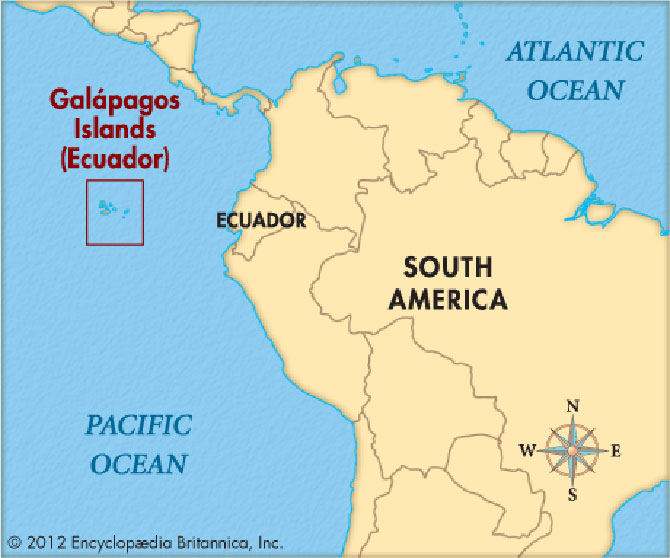Burnt out from his medical studies, Charles Darwin thought he needed a long sabbatical.
So he packed his bags, and, together with a friend, Captain Robert Fitzroy, left England on board the HMS Beagle in July 1835 bound for the Galapagos Islands, arriving on September 15, 1835.
At first, his only intention was to see an active volcano. The flora and fauna he saw blew his mind away, prompting him to write his first book the “Voyage of the Beagle.”
So many notes later, he published in 1859 his controversial book “The Origin of the Species,” which roiled the scientific and religious worlds, and him, a place in history.
Where are the Galapagos Islands:
It is a group of small islands 906 km west of Ecuador, of which they are a part.

They were accidentally discovered by the Bishop of Panama Fray Tomas de Berlanga when he was sent to Peru in 1535 to mediate on a dispute between Francisco Pizarro and Diego del Almagro.
Though he got back to Spain safely, but his discovery ushered more expeditions.
They have been given several names, but now simply the Galapagos Islands.
Ecuador has declared it a nature preserve and marine sanctuary. Though it caters to tourists, commercial exploitation is not allowed. Thus they have maintained their unique biodiversity as the day Charles Darwin set foot on them.
These pictures, taken in 1957, attest to that:
1. A 500 lb tortoise, 51 in down the back hiding its head at the hiss of danger.
2. The crude shoreline Charles Darwin saw.
3. A sea iguana.
4. Seals frolicking in the shallows.
5. A Galapagos hawk surveying the landscape.
6. Brown pelican, relative to the U.S. pelican, still has an empty pouch.
7. Lava cliff, the blue waters below, and cactus trees on top.
8. A three-month old fur seal sunning itself on a lava cliff.
9. Lava lizard dining on smaller lizard – a rarity since lizards normally eat insects.
10. A scarlet rock crab – this squirts water when frightened.
11. Prickly pear cacti can reach as high as 30 feet in the Galapagos.
12. Sea lion in a playful mood in St. James Island.
13. A sea bird shivering in the cold.
14. The barren and craggy landscape of the Galapagos.
15. Beautiful Galapagos sunset.
16. The guys behind these breathtaking photos. Front: Dr. I. Eibl-Eibesfeldt of West Germany and Dr. Robert Bowman of the U.S. Behind: LIFE’s photographer Alfred Eisenstaedt and Artist Rudolf Freund, who made the illustrations.
Note: If you love Nature and the environment, please share and let others appreciate the shrinking beauty of the world around us.
~oOo~

















